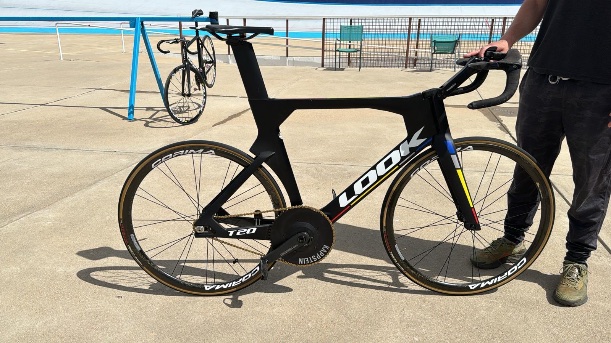In defense of aero bikes:
How much of this do you think is guys seeing the flagship model in the TdF and assuming that must be the best bike for them? If I had a dollar for every $10k full aero race bike with a full setup of spacers…basically riding endurance geometry.
I can’t help but think part of the issue is that no one wants to buy a bike for “slower riders”, everyone is a champ in their own mind. You’re completely correct that the user experience for a full-aero bike is a PITA for anything outside of racing. Maybe the disconnect is in the purchase process. You’d be happier with an all-arounder/endurance/relaxed bike, but it’s really hard to justify getting a “slower” bike.
i don’t know about you, but in my own riding - and i think if we all still ride road bikes a lot we tend to repeat a lot of the same routes - i don’t see any evidence that speed attaches to aero bikes. speed attaches to bikes that are set up correctly and that your body resonates with. that might in fact be an aero bike. but the chances of that bike being a bike that is unadjustable are slim.
look, i think most of us who’ve been around are generally predisposed against specialized as a brand because of a history of petty, imperious litigations; a spend and grab followed by slash and burn approach to triathlon sponsorships; and so on. but for that checkered history of questionable office behavior specialized is, right now, in my mind, killing it in bike design and in particular road bike design. the latest tarmac (SL8) appears to be an all-rounder hit and i don’t see any sprinters in the pro peloton complaining about it. to me, this is the future of road bikes.
Agreed about setup and fit - a non-aero bike with a good position will be faster than an aero bike with a poor fit. But if the same fit is achieved then the aero bike should be faster. One of the biggest reasons race bikes are faster is that they facilitate a long/low position. The current generation of endurance bikes are difficult to setup in such a position.
I’m generally skeptical of what pros say about bikes. Ironic that they have the least choice of equipment when their equipment is the most important. If a bike brand is providing bikes for my team I probably won’t open my mouth to say that they’re anything other than great.
our industry has in some ways found the right way of interpreting what’s aero, and in some ways has gone off the deep end and has gotten it all wrong.
in my opinion, and over my time in this industry, here is what i think is the role of aero: you figure out what your imperatives are, and then you “aero” them. for example, you figure out your bike position, and your position is the best mix of comfort/aero/power. so, you have that position. then you “aero” it. you tilt the forearms, roll the shoulders, tuck the chin, and you build a set of aerobar extensions that comes as close to fairing that position as you legally get away with. without compromising the comfort and power of your position.
second example: you choose the tires you want to ride. then you build a wheel that accommodates those tires, and forks and stays that accommodate that wheel system.
in those examples above you have made system choices that include power production and Crr, and then you make that all aero. the industry has gotten or is getting that right.
where the industry goes off the rails is with “aero” road stem/bar systems, and aero frame tubes in road bikes. you made a frame that’s uncomfortable and unadjustable. you violated your “first, do no harm” operating principle, if you operated by that principle, which bike makers often don’t. this is why specialized ditched the venge and stuck with the tarmac. it was off doing stupid stuff and then got back on the right track.

